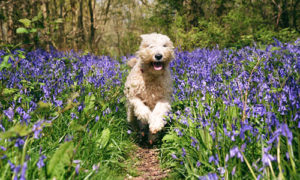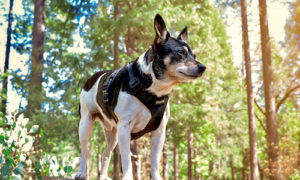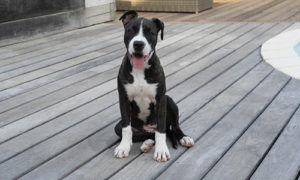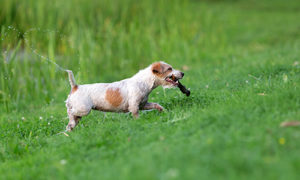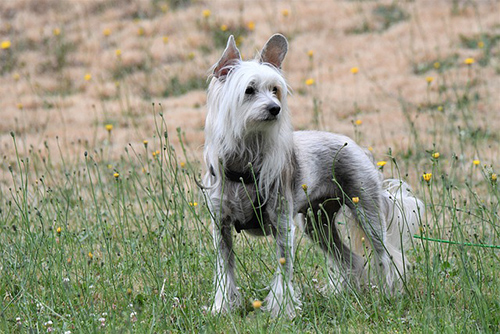
The Chinese Crested Dogs‘ origin is not easy to trace. All over the world, hairless dogs seem to develop by mutation; however, they have been primarily propagated in Central and South America. The Chinese Crested Dog is the exception, apparently coming from Africa and imported to China as early as the 13th century. It is believed that Chinese seamen kept the dogs on their ships as non-flea-bearing ratters and souvenirs and traded them with local merchants wherever they called.
The Chinese Crested Dog has been exported to Egypt, South Africa, Central, and South America, and possibly Turkey. They were only recorded in Europe in the 1800s via paintings and later with photographs, including breeds of the Chinese Crested type. The dogs found a supporter in American Ida Garrett, who made several types of hairless dogs popular in the late 1800s.
Thanks to a handful of committed breeders, including famed Gypsy Rose Lee, the dogs finally gained followers in Europe and America. After a century of effort, in 1991, the AKC recognized the breed. The Chinese Crested became very popular with dog-showing fans very quickly. However, the dogs have been slower to appeal to average pet owners. Hopefully, as the breed gets more exposure, this condition is almost sure to change.
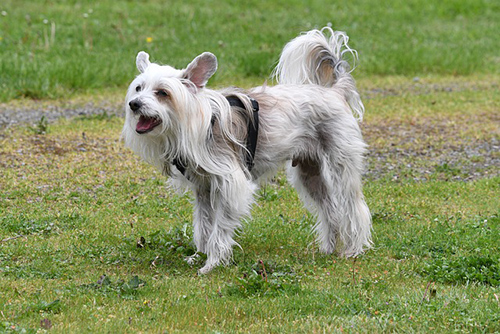
Breed Standard
The Crested is a small, fine-boned, elegant dog with rectangular proportions. The dog’s back is level, and the tail is long and straight, reaching the hock and kept up but never curled over the back. The legs are long and refined; the feet are oval with long toes. The head is moderately rounded and equal in length to the delicate, tapered muzzle. The ears are large, carried erect, and set low and wide on the head. The eyes are oval and wide-set, giving the Crested an exotic, inscrutable, mischievous expression.
Breed Facts
| Energy level | Watchdog ability | ||
| Exercise requirements | Protection ability | ||
| Playfulness | Grooming requirements | ||
| Affection level | Cold tolerance | ||
| Friendliness toward dogs | Heat tolerance | ||
| Friendliness toward other pets | Friendliness toward strangers | ||
| Ease of training |
- Popularity: Somewhat widespread (although not highly popular, there are a few movies with the breed playing a significant role)
- Family group: Primitive, hairless
- Country of Origin: China
- Date developed: 1200s
- Original purpose: Ratter, lapdog, curio
- Current function: Companion
- Other names: None
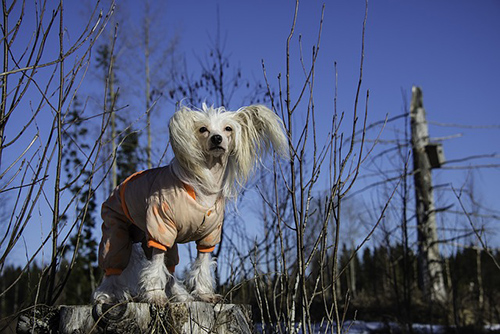
Activity level: Moderately low. Chinese Crested dogs require daily walks, interactive play, or running in a fenced yard. Fencing must be secure, as these dogs can quickly jump and clear a 3-foot fence and climb chain links like monkeys. They highly accept hot weather but are extremely sensitive to cold, answering the all-important question of why Chinese Cresteds shake. Therefore, put a sweater on your dog during cold weather when you walk.
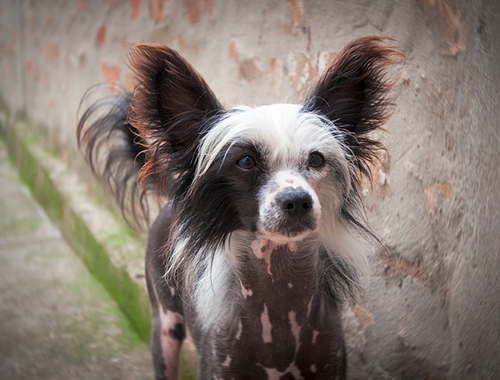
Grooming: The hairless Crested’s hair needs to be brushed with a pin brush 2 to 3 times weekly and bathed every one to 2 weeks. Excess body hair needs regular removal to keep the skin clean and healthy. Powderpuffs must be brushed every two or three days to prevent matting. Shorter pet trims will minimize grooming.
Coat: What is a hairy hairless Chinese Crested? This variety is the only long-coated hairless breed, with soft, silky hair on the head, feet, tail, and rear hock joints. Hair may be on the face and ears. The skin is smooth and soft on the hairless parts of the body. The Powderpuff variety has a silky double coat that covers the entire body.
Color: All colors and combinations
Group: Toy
Year of recognition by the AKC: 1991
Chines Crested Temperament
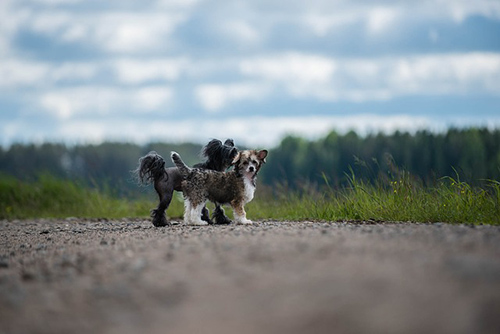
The Chinese Crested dog is a companion that is traditionally used as a comfort canine. Cresteds bond firmly with their owners but are typically reserved with strangers. The dogs can become shy or defensive without training and socialization. Cresteds tend to be highly attuned to social interaction and receptive to training. They learn quickly but are also top-class opportunists. Potential owners should not ignore unwanted behavior.
Health
- Main problems: PRA, glaucoma, lens luxation
- Minor issues: deafness, seizures, patellar luxation
- Rarely seen: Legg-Perthes
- Recommended tests: eye, hearing, knees, cardiac
- Life span: 13 to 18 years (the oldest living Chinese Crested dog was 20)
- Note: The Hairless Crested is susceptible to sunburn, wool allergy, tooth loss, and blackheads. Also, the Hairless has irregular odontiasis and thinner enamel.
- Weight: 5 to 12 pounds
- Height: 11 to 13 inches
Breeder and Buyer’s Advice

Find a breeder in your area and screen them carefully. Locate a breeder who will teach you how to care for a Chinese Crested dog correctly. You can visit the parent club’s website for more information about potential puppies for sale. The website will also list potential approved breeders in your area. You can also find breeders in your area by typing “Chinese Crested dog for sale near me” into a search engine like Google.
Parent club: American Chinese Crested Club; founded in 1979
Regional clubs: Regional clubs are listed on the parent club’s website
Rescue: Contact information on rescue Crested is on the parent club’s website

